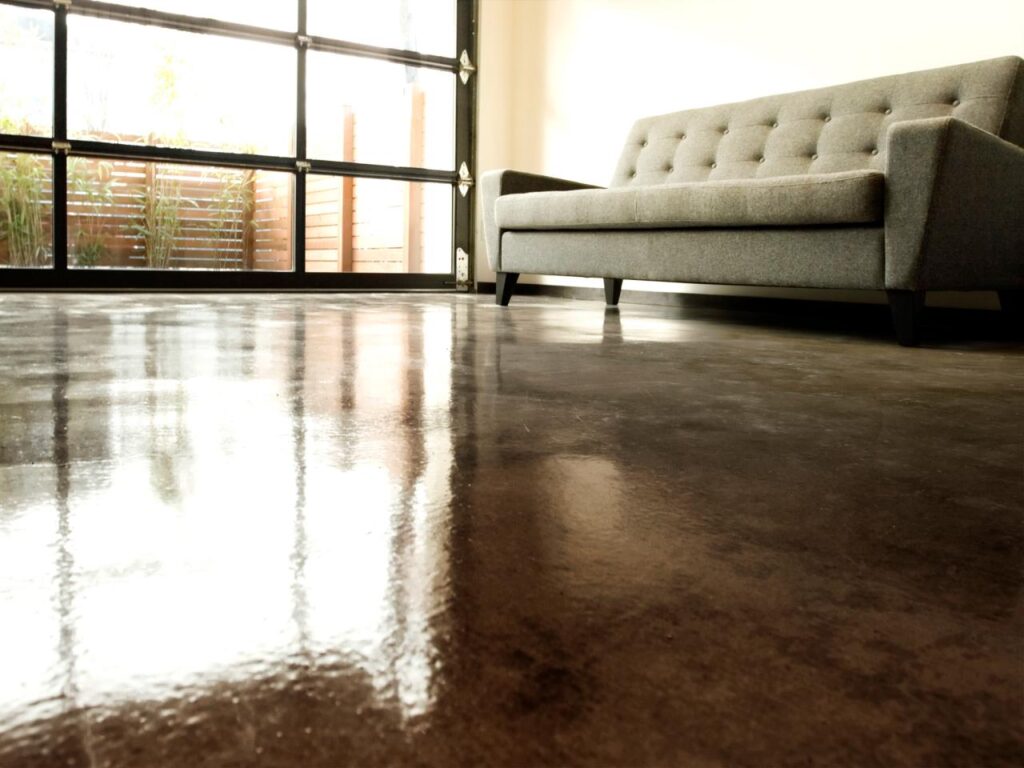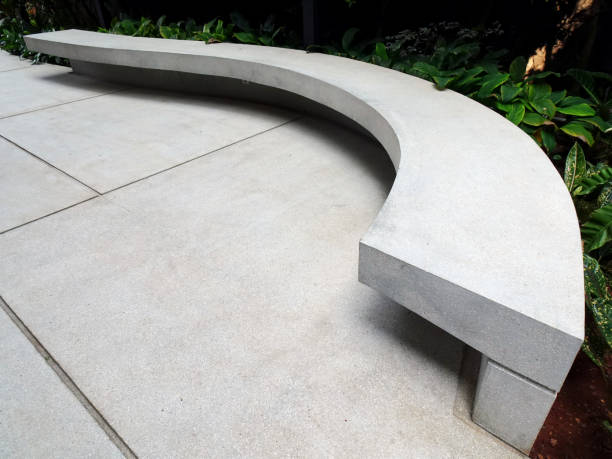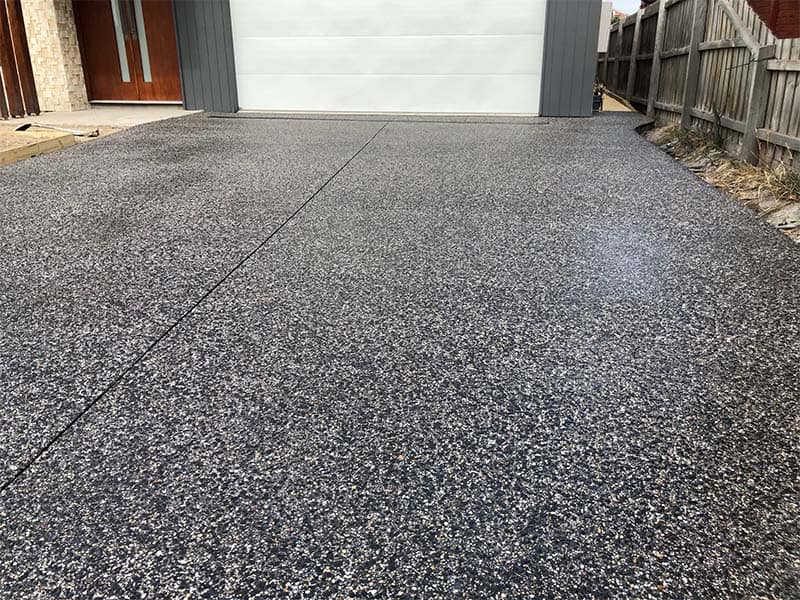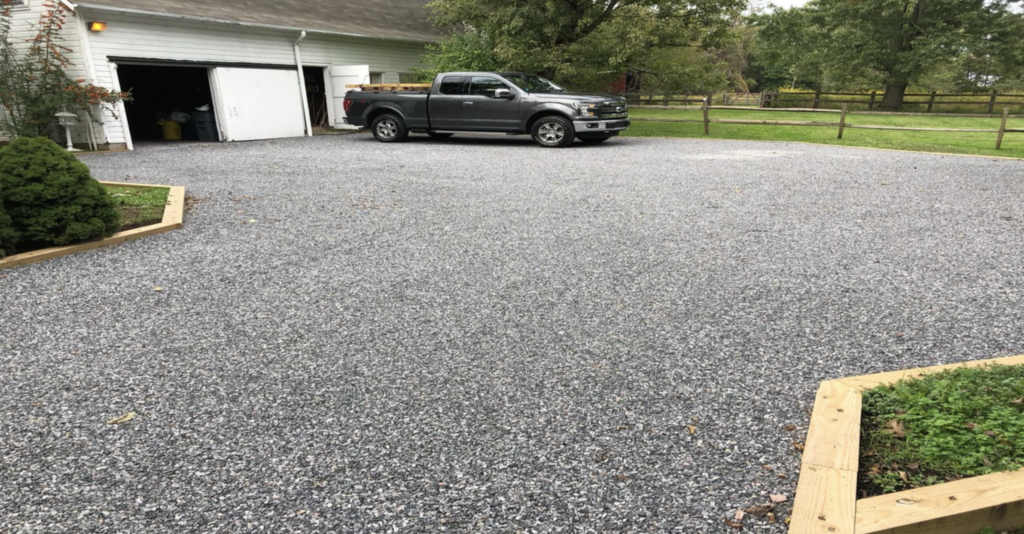Welcome to our in-depth exploration of superplasticizers and their transformative impact on concrete. If you’ve ever wondered how modern construction achieves such remarkable strength and flexibility, you’re about to discover a key component behind these advancements. Superplasticizers, also known as high-range water reducers, play a crucial role in enhancing concrete’s workability, strength, and durability. In this blog post, we’ll demystify what superplasticizers are, how they function, and why they are indispensable in today’s construction industry. Whether you’re a curious homeowner, a budding engineer, or a seasoned contractor, this guide will provide you with a clear understanding of how superplasticizers revolutionize concrete applications, ensuring structures are not only robust but also aesthetically superior. Let’s dive in and uncover the magic of superplasticizers in concrete!
Superplasticizers are chemical admixtures used in concrete to enhance its workability and strength without increasing water content. They make the concrete mix more fluid, allowing for easier placement and reduced water usage, which leads to stronger and more durable structures. Commonly used in high-rise buildings, bridges, and precast concrete elements, superplasticizers play a crucial role in modern construction by improving both the performance and aesthetic quality of concrete.
- Understanding Superplasticizers
- How Superplasticizers Work
- Benefits Of Using Superplasticizers In Concrete
- Applications Of Superplasticizer Concrete
- Potential Drawbacks And Considerations
- Future Trends In Concrete Technology
- FAQs: About What Does Superplasticizer Do to Concrete
- What is a superplasticizer in concrete?
- How do superplasticizers work?
- What are the benefits of using superplasticizers in concrete?
- Are there different types of superplasticizers?
- Where are superplasticizers commonly used?
- Can superplasticizers be used with other concrete admixtures?
- What is the typical dosage of superplasticizers in concrete?
- Are there any drawbacks to using superplasticizers?
- How do superplasticizers contribute to sustainable construction?
- What are the future trends in superplasticizer technology?
- Conclusion
Understanding Superplasticizers
Definition
Superplasticizers are advanced chemical compounds used in the construction industry to enhance the properties of concrete. Think of them as powerful additives that make concrete more workable without adding extra water. In simpler terms, they are like the secret ingredient that makes your concrete mix smooth and easy to handle, allowing it to flow more freely and fill molds or forms more effectively. This increased fluidity is crucial for creating complex shapes and ensuring a high-quality finish.
History and Development
The journey of superplasticizers in the construction world began in the mid-20th century. During this time, the demand for higher-performance concrete grew, especially for large-scale infrastructure projects. Traditional methods of making concrete workable involved adding more water, which weakened the overall strength of the concrete. Researchers and engineers sought a solution that would maintain strength while improving workability. The breakthrough came in the 1960s and 1970s with the development of the first generation of superplasticizers, primarily based on sulfonated melamine formaldehyde and sulfonated naphthalene formaldehyde. These innovations revolutionized the industry, allowing for the creation of high-strength, durable concrete with superior workability.
Types of Superplasticizers
There are several types of superplasticizers, each with unique properties and benefits. Here are the most common ones:
1. Sulfonated Naphthalene Formaldehyde (SNF)
Description: SNF-based superplasticizers are among the earliest and most widely used. They are known for their strong dispersing capabilities, which significantly reduce the water content in the concrete mix.
Applications: Ideal for precast concrete, ready-mix concrete, and concrete requiring high early strength.
2. Sulfonated Melamine Formaldehyde (SMF)
Description: SMF superplasticizers provide excellent fluidity and workability to concrete mixes. They are particularly effective in reducing the water-cement ratio, which enhances the strength and durability of the concrete.
Applications: Commonly used in high-performance concrete, self-compacting concrete, and applications where superior surface finish is required.
3. Polycarboxylate Ethers (PCE)
Description: PCE-based superplasticizers represent the latest advancement in concrete technology. They offer superior performance compared to earlier generations, providing exceptional fluidity and long-lasting workability without compromising the concrete’s strength.
Applications: Ideal for high-strength concrete, complex architectural designs, and projects requiring extended workability periods.
In summary, superplasticizers play a crucial role in modern construction by improving the workability and performance of concrete. Understanding their definition, history, and types helps in appreciating their importance in creating durable, high-quality structures.

How Superplasticizers Work
Superplasticizers, also known as high-range water reducers, are essential additives in modern concrete technology. They play a crucial role in enhancing the workability and performance of concrete without compromising its strength. Let’s delve into the intricacies of how superplasticizers function, their interaction with concrete, and the proper dosages and application methods.
Chemical Mechanism
At the molecular level, superplasticizers work by dispersing the cement particles within a concrete mix. This dispersion is achieved through a process known as electrostatic repulsion or steric hindrance, depending on the type of superplasticizer used.
1. Electrostatic Repulsion: Most superplasticizers are composed of long-chain polymers that carry a negative charge. When these polymers are added to a concrete mix, they attach to the positively charged cement particles. This creates a negative charge around each cement particle, causing them to repel each other. This repulsion prevents the particles from clumping together, thus improving the overall flow and workability of the concrete.
2. Steric Hindrance: Some superplasticizers operate through steric hindrance, where the polymer chains physically prevent cement particles from coming close together. The long chains of the polymers create a barrier that keeps the particles separated, enhancing the mix’s fluidity.
Interaction with Concrete
The primary benefit of superplasticizers is their ability to significantly reduce the water content in a concrete mix while maintaining the same level of workability. This reduction in water content leads to higher strength and durability of the cured concrete.
1. Enhanced Workability: By dispersing cement particles, superplasticizers reduce the internal friction within the mix. This makes the concrete more fluid and easier to work with, which is especially beneficial for complex forms or detailed molds.
2. Improved Strength and Durability: Lowering the water-cement ratio without affecting workability leads to denser concrete with fewer voids. This results in higher compressive strength and better resistance to environmental factors such as freeze-thaw cycles, chemical attacks, and abrasion.
3. Reduced Shrinkage and Cracking: With less water in the mix, there is less evaporation and shrinkage during curing. This reduces the likelihood of cracking, enhancing the structural integrity and longevity of the concrete.
Dosage and Application
The effectiveness of superplasticizers depends heavily on the correct dosage and proper mixing techniques. Overdosing can lead to segregation and excessive bleeding, while underdosing may not provide the desired workability and strength.
1. Typical Dosages: The recommended dosage of superplasticizers varies depending on the specific product and the concrete mix’s requirements. Generally, dosages range from 0.5% to 2.5% of the cement weight. It’s crucial to follow the manufacturer’s guidelines and conduct preliminary tests to determine the optimal amount.
2. Adding to Concrete Mixes: Superplasticizers can be added to the concrete mix at different stages. They can be introduced during the initial mixing of water and cement or after the initial mixing to fine-tune the consistency. It’s important to ensure thorough mixing to evenly distribute the superplasticizer throughout the mix.
3. Field Adjustments: Conditions on the job site, such as temperature and humidity, can affect the performance of superplasticizers. Adjustments may be necessary to achieve the desired consistency and workability. Regular on-site testing and adjustments help maintain the quality and performance of the concrete.
By understanding the chemical mechanism, interaction with concrete, and proper dosages and application of superplasticizers, construction professionals can significantly enhance the performance and durability of their concrete structures. These additives are invaluable in modern construction, offering both improved workability and superior strength characteristics.

Benefits Of Using Superplasticizers In Concrete
Increased Workability
Superplasticizers play a pivotal role in enhancing the workability of concrete. When added to the concrete mix, these high-range water reducers make the mixture more fluid and easier to handle. This is particularly beneficial in scenarios involving complex forms and intricate structural designs. Imagine trying to pour a traditional concrete mix into a mold with tight corners and detailed patterns—it’s a tough job. However, with superplasticizers, the concrete flows more smoothly and fills every nook and cranny, reducing the effort and time needed for placement. This increased workability not only makes the construction process more efficient but also ensures a more uniform and defect-free structure.
Reduced Water Content
One of the standout advantages of using superplasticizers is their ability to significantly reduce the water content in the concrete mix while maintaining the desired fluidity. Traditionally, achieving a workable mix would require adding more water, which unfortunately compromises the strength and durability of the concrete. Superplasticizers, however, solve this dilemma. They allow for a reduction in water content by up to 30%, without sacrificing the mix’s workability. This lower water-to-cement ratio results in denser and more durable concrete, enhancing its performance in various environmental conditions and applications.
Improved Strength and Durability
The addition of superplasticizers has a profound impact on the strength and durability of concrete. By enabling a lower water-cement ratio, superplasticizers contribute to the production of high-strength concrete. The denser matrix formed in the presence of reduced water leads to a more robust and long-lasting structure. This enhanced strength is crucial for buildings and infrastructures that must withstand significant loads and harsh environmental conditions. Moreover, concrete treated with superplasticizers exhibits greater resistance to cracking and shrinkage, which are common issues in traditional concrete. This results in structures that not only meet but often exceed their expected service life, providing long-term value and safety.
Enhanced Surface Finish
Another significant benefit of superplasticizers is the improved surface finish of concrete. When concrete is easier to work with and flows better, it naturally leads to a smoother, more refined surface. This is particularly important in projects where the aesthetic quality of the concrete is a priority, such as in architectural applications, decorative elements, and exposed concrete surfaces. The use of superplasticizers ensures that the finished product has fewer imperfections, such as air bubbles and surface irregularities. As a result, the concrete not only performs better but also looks better, enhancing the overall visual appeal of the structure.
In conclusion, the benefits of using superplasticizers in concrete are substantial. They improve workability, reduce water content, enhance strength and durability, and lead to a superior surface finish. These advantages make superplasticizers an invaluable component in modern concrete technology, contributing to the construction of more efficient, durable, and aesthetically pleasing structures.

Applications Of Superplasticizer Concrete
Construction Projects
Superplasticized concrete, known for its high workability and flow properties, has found significant applications in various construction projects. This specialized concrete is particularly beneficial in the following:
High-Rise Buildings: The ability of superplasticized concrete to flow easily makes it ideal for high-rise construction, where pumping concrete to great heights is a challenge. Its high workability ensures that the concrete can be placed and compacted without segregation or excessive labor.
Bridges: Bridges often require concrete with high strength and durability. Superplasticized concrete provides these qualities, making it suitable for bridge decks, piers, and abutments where long spans and heavy loads demand robust materials.
Precast Concrete: In the precast concrete industry, the use of superplasticizers allows for the production of complex shapes and designs with high precision. This type of concrete enhances the surface finish of precast elements and reduces the need for further finishing work.
Special Requirements
Certain construction scenarios demand specific properties that superplasticized concrete can provide:
Rapid Setting Times: In projects where time is of the essence, such as road repairs or emergency constructions, superplasticized concrete can be formulated to achieve rapid setting times. This ensures that the structure can be used much sooner, minimizing downtime and disruption.
Challenging Environmental Conditions: Construction in harsh environments, such as extreme temperatures or underwater conditions, benefits greatly from superplasticized concrete. Its ability to maintain workability and strength under these conditions makes it a preferred choice for such projects.
Case Studies
To highlight the effectiveness of superplasticizer concrete, let’s look at some notable projects:
Burj Khalifa, Dubai: The tallest building in the world utilized superplasticized concrete to achieve the necessary strength and workability required for such a massive structure. The concrete needed to be pumped to unprecedented heights without losing its properties, a feat accomplished with the help of superplasticizers.
Millau Viaduct, France: This cable-stayed bridge, one of the tallest in the world, used superplasticized concrete in its construction. The material’s superior flow characteristics allowed for the precise placement of concrete in the bridge’s towering piers, ensuring stability and longevity.
Precast Segments of the Channel Tunnel, UK-France: The Channel Tunnel, connecting the UK and France, utilized precast concrete segments made with superplasticizers. These segments had to meet stringent quality standards for durability and fit, which were achieved thanks to the enhanced properties of superplasticized concrete.
In summary, superplasticized concrete has proven to be a game-changer in modern construction. Its applications range from towering skyscrapers to expansive bridges and intricate precast elements. With its ability to meet special requirements and excel in challenging conditions, superplasticized concrete continues to shape the skyline and infrastructure of the future.

Potential Drawbacks And Considerations
When considering the use of superplasticizers in your concrete mix, it’s important to be aware of potential drawbacks and considerations to ensure optimal results. While superplasticizers can significantly enhance the workability and strength of concrete, there are some risks and issues that you need to keep in mind.
Overuse Risks
One of the primary risks associated with the use of superplasticizers is the potential for overuse. Adding too much superplasticizer can lead to several problems in your concrete mix:
1. Segregation: Excessive amounts of superplasticizer can cause the concrete components to separate. This segregation happens when the water and cement paste separate from the aggregate, leading to a non-uniform mix. The result is a weaker structure with poor durability.
2. Excessive Bleeding: Overuse can also cause excessive bleeding, where water rises to the surface of the concrete. This bleeding can create weak surface layers, which are prone to cracking and dusting. In extreme cases, it can even lead to the formation of water pockets within the concrete, compromising its integrity.
To avoid these issues, it’s crucial to follow the manufacturer’s recommended dosage and conduct trial mixes to determine the optimal amount of superplasticizer for your specific project.
Compatibility Issues
Another important consideration is the compatibility of superplasticizers with other admixtures or materials used in your concrete mix. Not all superplasticizers are compatible with every type of cement or admixture, and using incompatible products can lead to unexpected results.
1. Admixture Interactions: When combined with other chemical admixtures, superplasticizers can sometimes cause undesirable interactions. For example, using a superplasticizer with a retarder might result in an extended setting time that is longer than desired.
2. Material Compatibility: Superplasticizers may also react differently with various types of cement, especially those containing supplementary cementitious materials like fly ash or slag. These interactions can affect the performance and setting characteristics of the concrete.
To mitigate these compatibility issues, it is recommended to conduct compatibility tests before incorporating superplasticizers into your mix design. Consult with your supplier to ensure that the products you are using are suitable for your specific materials and conditions.
Cost Implications
The cost of using superplasticizers is another critical factor to consider. While they can provide substantial benefits, including enhanced workability and reduced water-cement ratio, it’s essential to weigh these advantages against the cost implications.
1. Initial Costs: Superplasticizers can be relatively expensive compared to other admixtures. The initial cost of purchasing and incorporating them into your concrete mix may be higher, which could impact the overall budget of your project.
2. Long-term Benefits: Despite the higher initial cost, superplasticizers can offer long-term savings by improving the durability and lifespan of the concrete. For instance, by reducing the water-cement ratio, superplasticizers help in producing high-strength concrete, which can reduce maintenance and repair costs over the life of the structure.
3. Cost-Benefit Analysis: Conducting a thorough cost-benefit analysis is crucial. Consider the specific requirements of your project, the desired properties of the concrete, and the potential savings in terms of reduced maintenance and extended lifespan. This analysis will help you determine whether the benefits of using superplasticizers justify the additional cost.
In summary, while superplasticizers offer significant advantages in enhancing the workability and performance of concrete, it’s essential to be mindful of potential drawbacks such as overuse risks, compatibility issues, and cost implications. By carefully considering these factors and conducting appropriate tests, you can maximize the benefits of superplasticizers while minimizing any adverse effects.

Future Trends In Concrete Technology
Concrete technology is continuously evolving, with new innovations shaping the way we build. One of the key areas experiencing significant advancements is the development and application of superplasticizers. These chemical admixtures are transforming the construction industry by enhancing the workability and performance of concrete. Let’s delve into the latest innovations in superplasticizer technology, their role in promoting sustainable construction practices, and industry predictions for their future use.
Innovations in Superplasticizers
Superplasticizers, also known as high-range water reducers, are a game-changer in concrete technology. Recent developments have focused on creating more efficient and versatile formulations. One major innovation is the introduction of polycarboxylate ether (PCE)-based superplasticizers. These advanced chemicals offer superior performance compared to traditional naphthalene or melamine-based superplasticizers. PCE-based superplasticizers provide better control over the workability and setting time of concrete, allowing for more precise and efficient construction processes.
Additionally, research is being conducted to develop superplasticizers that can adapt to varying environmental conditions. For instance, new formulations are being designed to maintain their effectiveness in extreme temperatures, both hot and cold. This adaptability ensures consistent concrete quality regardless of external factors, making construction projects more reliable and efficient.
Sustainable Practices
The construction industry is under increasing pressure to adopt more sustainable practices, and superplasticizers are playing a pivotal role in this transformation. By significantly reducing the water-cement ratio without compromising the workability of concrete, superplasticizers contribute to the production of stronger and more durable concrete structures. This results in longer-lasting buildings and infrastructure, which ultimately reduces the need for repairs and replacements, conserving resources in the long run.
Moreover, the use of superplasticizers can lead to a reduction in cement consumption. Cement production is a major source of carbon dioxide emissions, so using less cement in concrete mixes helps lower the overall carbon footprint of construction projects. Some superplasticizers are also being formulated with eco-friendly materials, further enhancing their sustainability profile. These advancements align with the global push towards greener construction methods and help the industry meet stringent environmental regulations.
Industry Predictions
As we look to the future, the role of superplasticizers in concrete technology is set to expand even further. One prediction is the increased use of smart superplasticizers, which incorporate nanotechnology to provide real-time feedback on concrete properties. These intelligent admixtures can adjust the mix in response to changing conditions, ensuring optimal performance throughout the construction process. This level of control will lead to higher quality and more resilient concrete structures.
Another trend to watch is the integration of superplasticizers with other advanced technologies, such as 3D printing in construction. Superplasticizers can enhance the flow properties of concrete, making it more suitable for use in 3D printing applications. This synergy will pave the way for more innovative and efficient building techniques, revolutionizing the way structures are designed and constructed.
Furthermore, the demand for sustainable construction solutions will continue to drive the development of eco-friendly superplasticizers. We can expect to see more products that not only improve concrete performance but also minimize environmental impact. These green superplasticizers will become a standard component in concrete mixes, supporting the industry’s shift towards more responsible and sustainable building practices.
In conclusion, the future of concrete technology is bright, with superplasticizers at the forefront of innovation. From improving workability and durability to promoting sustainability and enabling new construction methods, these chemical admixtures are set to play a crucial role in shaping the built environment of tomorrow. By staying abreast of these trends and embracing new developments, the construction industry can look forward to a more efficient, sustainable, and resilient future.

FAQs: About What Does Superplasticizer Do to Concrete
What is a superplasticizer in concrete?
Superplasticizers are chemical admixtures added to concrete to improve its workability and strength without increasing the water content. They allow the concrete to flow more easily and reduce the need for excess water.
How do superplasticizers work?
Superplasticizers work by dispersing cement particles within the concrete mix, reducing friction and allowing the mixture to flow more freely. This improved flowability enables easier placement and compaction of the concrete.
What are the benefits of using superplasticizers in concrete?
The primary benefits of using superplasticizers include increased workability, reduced water content, enhanced strength and durability, and improved surface finish. These advantages make construction processes more efficient and result in higher-quality structures.
Are there different types of superplasticizers?
Yes, there are several types of superplasticizers, including sulfonated naphthalene formaldehyde (SNF), sulfonated melamine formaldehyde (SMF), and polycarboxylate ethers (PCE). Each type has unique properties suited for different applications.
Where are superplasticizers commonly used?
Superplasticizers are widely used in various construction projects, including high-rise buildings, bridges, precast concrete elements, and any structures requiring high-strength, durable concrete.
Can superplasticizers be used with other concrete admixtures?
Yes, superplasticizers can be used with other concrete admixtures, but it’s essential to test for compatibility. Some combinations may cause adverse reactions, so consulting with a concrete specialist is advisable.
What is the typical dosage of superplasticizers in concrete?
The dosage of superplasticizers varies depending on the specific product and desired concrete properties. Generally, it ranges from 0.5% to 2% of the cement weight. Always follow the manufacturer’s recommendations for optimal results.
Are there any drawbacks to using superplasticizers?
Potential drawbacks of using superplasticizers include the risk of overdosage, which can lead to segregation and excessive bleeding of the concrete. Additionally, there may be cost implications, although the benefits often outweigh the costs.
How do superplasticizers contribute to sustainable construction?
Superplasticizers contribute to sustainable construction by reducing the water content in concrete mixes, which leads to stronger and more durable structures. This reduction in water usage also supports environmentally friendly construction practices.
What are the future trends in superplasticizer technology?
Future trends in superplasticizer technology include the development of more efficient and environmentally friendly formulations. Innovations are focusing on enhancing performance, reducing costs, and improving the sustainability of concrete construction.
Conclusion
In conclusion, we’ve explored the vital role of superplasticizers in modern construction, emphasizing their benefits in enhancing concrete workability and strength. These additives not only improve the flow and consistency of concrete mixtures but also contribute significantly to the durability and longevity of structures. By understanding their applications, from high-rise buildings to intricate architectural designs, we recognize their importance in achieving superior construction quality. If you found this information helpful, please share this post, leave a comment with your experiences, or contact us for more insights into advanced concrete solutions.
About the Author:
Mike Veail is a recognized digital marketing expert with over 6 years of experience in helping tradespeople and small businesses thrive online. A former quantity surveyor, Mike combines deep industry knowledge with hands-on expertise in SEO and Google Ads. His marketing strategies are tailored to the specific needs of the trades sector, helping businesses increase visibility and generate more leads through proven, ethical methods.
Mike has successfully partnered with numerous companies, establishing a track record of delivering measurable results. His work has been featured across various platforms that showcase his expertise in lead generation and online marketing for the trades sector.
Learn more about Mike's experience and services at https://theleadguy.online or follow him on social media:








